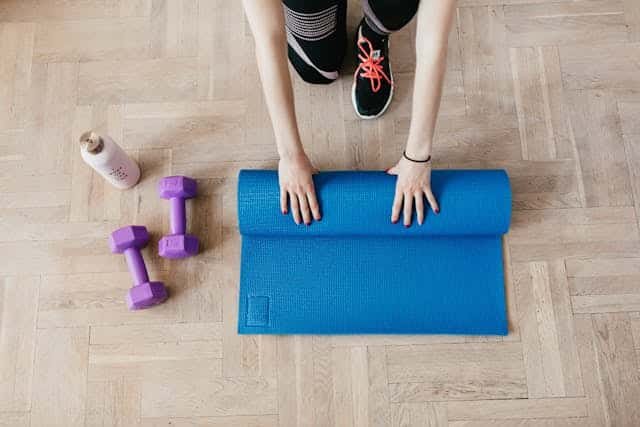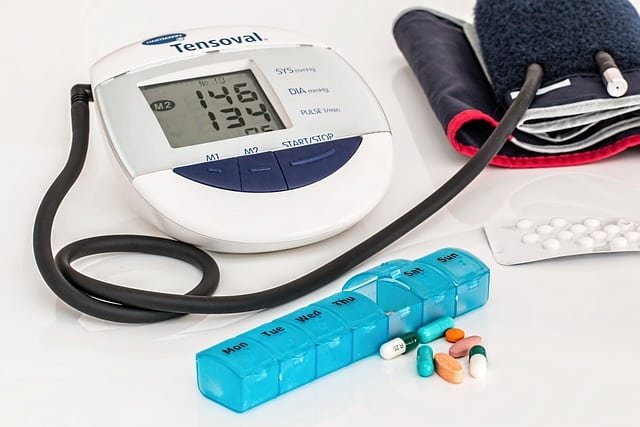Introduction
Regular exercise and a healthier balanced diet are always beneficial, and it shows that women who stay fit and live healthily look great and feel great. They experience higher energy, sleep better at night, and enjoy good general health and mental well-being. The women notice improved self-esteem and resilience to stress and illness. Okay so, what are the secrets of these women? These are the 7 habits of women who are always in shape, and you surely wish to have one. Join us as we delve into their approaches to exercise, eating for energy and mental health, ritualising mindfulness, and formulating the habits that support high performance.
In This Article
1. Consistent Exercise Routine
Cardiovascular Exercise
For maintaining a healthy heart, it is very important that you combine some cardiovascular sports such as running, biking or swimming.
These activities cause your heart to beat faster. This, in turn, increases the flow of blood in all of your organs and tissues.
Besides, those exercises will help you burn calories. This is good for keeping at a healthy weight.
To achieve maximum health benefits, set yourself a goal of at least 150 minutes of moderate-intensity cardio a week. Moderate-intensity activities may include brisk walking and jogging lightly.
But if you want more demanding workouts, choose 75 minutes at high intensity. High-intensity cardio means running fast or riding really hard.
In your weekly routine: adding these exercises can substantially improve your cardiovascular health and physical condition.
Strength Training

You need to exercise your strength by lifting weights, using resistance bands, or even doing pushups with a lighter kind of body weight. Your body needs to adapt and increase its muscle mass. This, in turn, increases bone density. Also, accelerating your metabolism, thereby burning off lots more calories, will keep you lean even as ageing rids your body fat. In addition, strength training is kind to your joints. It allows them to retain stability and good mobility, so they will be less apt for quite serious injuries as time goes on. To gain the benefits from this type of workout, you should include strength training two times each week. It doesn’t matter what your goal is – be it looking better or feeling better all around – don’t miss out on strength training!
Flexibility and Stretching
Like yoga or Pilates, stretching exercises are very necessary. They keep your joints moving smoothly, absorb impact on their behalf, and help prevent injury. Stretching can soften your muscles, thereby promoting a good posture and easy sitting pose. Add these exercises to your daily routine to keep an active body with legs flexible and no back pain muscles. Make sure that you get up and move around a little; it will be the difference between feeling great when you wake up in the morning and feeling really bad if you don’t do anything for yourself!
Staying Consistent and Committed
The key to a good plan, however, is committing to it. You can do this by creating a schedule and setting goals that you can meet. Variety is key to helping keep workouts fun and ensuring you are working with different muscle groups. Routines are still important, even on those days you just aren’t feeling it. In due time, this dedication will also dynamically improve your fitness and general health. You and your lifestyle, consistency and constant self-improvement.
How do people find the motivation to work out regularly?
Keeping up with your workout routine can be tough, but the motivation comes from different places for many people. A clear fitness goal that is attainable: Your training objective must be something you can track and focus on. For instance, many people sign up for workout classes or enlist a fitness buddy so they have someone to hold them accountable and make exercise more fun. Some people use the high of completing a tough workout (energised, happier, etc.) to fuel their continued participation. Plus, change up routines and do different things. That way, you don’t burn yourself out.
2. Balanced Diet

A healthy diet is a healthy diet that allows people to live healthy lives, a healthy diet is recognized as a diet which is directly related to maintaining or increasing general health. Whole fruits, vegetables, whole grains, lean proteins and the healthy fats that your brain and body need are the natural flavours it has been designed to taste best with.
- Fruits and Vegetables – Highly rich in vitamins, minerals as well as fibre, eat fruits and vegetables almost every day. These foods contain a healthy dose of vitamins A, C, and K, which are important for the function of your immune system, healthy skin, and the way your blood clots. The minerals in fruit are also incredibly important because potassium and magnesium help to regulate blood pressure and support muscle and nerve function. Moreover, fibre found in fruits and vegetables can assist in the digestive process and can help alleviate conditions such as constipation and diverticulosis. Consumption of these everything bagels from your favourite spot will make sure that you get a variety of nutrients needed to have a healthy life, and thus, these should come in a significant part of the diet you intake by other means. PROTEINS — Required for the building and repair of tissues, protein can be sourced from animal sources (meat, fish and eggs) as well as plant sources (beans, lentils and nuts.)
- Carbohydrates – Carbohydrates act as the body’s main energy source, which is needed to fuel your daily activities and bodily functions. You can get these fats from such sources as: breads, rice, pasta, and potatoes. Ingested carbohydrates are broken down into glucose, the simple sugar that is transported into the cells to be used for energy. Whole grains like whole wheat bread, brown rice or whole grain pasta are Good ideaProcessed grains are no option Whole grains offer more fibre to promote digestion and steady blood sugar. These are the added vitamins and minerals that are often lost in the refining process. Incorporating a range of whole grains can aid in health and vitality.
- Fats –These healthy fats help give energy and support cell growth in the human body. They aid in the absorption of vitamins and maintain healthy skin and hair. And avocados (monounsaturated fats); nuts like almonds and walnuts (a mix of monounsaturated and polyunsaturated); seeds such as chia and flaxseeds (omega-3s); and fish like salmon and mackerel (omega-3s). Heart disease can lead to higher amounts of fat in the blood, which is why it is very important to cut dangerous fats, including trans fats that are found in fast and fried meals, in shops, providing the number of saturated fats in the diet, the many contain red meat and animal fats, dairy products.
- Dairy – High in calcium, critical to supporting bone health Calcium is an essential mineral that manufactures and maintains strong bones. Sufficient calcium consumption can prevent bone-related conditions such as osteoporosis and fractures. Cheese is another great option as long as it is not a low-fat version; they are not as healthy because of low calcium, so it’s better to choose full-fat cheeses that have more calcium in them, but avoid high-fat saturated ones but go for lower ones rather. These more healthful choices can supply the nutrients without the risks associated with high-fat diets.
How do they manage portion control?
Portion control is key to a balanced diet. This basically means it is not only what you are eating, but also how much you are eating from all the food groups to have a complete and balanced diet without over-eating. Taking control over portion sizes can help you make hovers in calories, avoid fat gain, and even protect your health in miracle circumstances. This behaviour leads to a more mindful eating experience, allowing you to understand your food cravings and the need to avoid unnecessary snacks. Not only that but using portion control makes it easier to adopt a sustainable and enjoyable dietary lifestyle making it easier to adhere to your dietary goals long-term. Here are a few portion control tricks.
- Using smaller plates: This simple trick can make your plate look fuller, which can help you feel satisfied with smaller portions. By arranging your food in a way that fills up the plate, it becomes easier to stick to healthy portion sizes without feeling deprived. It’s all about creating the visual impression that you’re eating more than you actually are, which can be a great way to maintain a balanced diet.
- Measuring or weighing foods: To make sure you’re eating the right amount, it’s a good idea to use measuring cups, spoons, or a food scale. These tools help you measure out the recommended serving sizes accurately so you can keep track of what you’re consuming. It might seem a bit tedious at first, but it’s a beneficial habit for maintaining a balanced diet and understanding portion sizes better. Plus, once you get the hang of it, it becomes second nature!
- Being aware of recommended serving sizes: Take some time to learn the recommended serving sizes for different food groups, as these can vary depending on the type of food. For example, a serving of grains is different from a serving of vegetables or protein. Knowing these guidelines can help you make informed choices and keep your portions in check.
- Eating slowly: It takes around 20 minutes for your brain to register that you’re full. Eating slowly gives your body time to recognise when it’s satisfied, helping you avoid overeating. Savour each bite and take breaks between bites to allow yourself time to feel satiated.
- Sharing meals or taking leftovers: When dining out or cooking at home, consider sharing a meal with a friend or family member or putting aside leftovers for later. This not only saves money but also helps control portion sizes. Many restaurants tend to serve oversized portions, which can lead to overeating and unnecessary calorie intake. Splitting the meal ensures that you consume an appropriate amount without feeling obligated to finish everything on your plate.
3. Mindfulness and Stress Management

Practising mindfulness is good for managing stress. Practicing mindfulness involves paying attention to your thoughts and feelings without judgement, focusing on the present moment which in turn creates a feeling of calm and clarity. Creating mindset rituals of gratitude has the potential to put a serious dent in that kind of anxiety and other aspects of your emotional well-being and quality of life. Mindfulness practices like meditation and deep breathing exercises can help one stay centred and respond to the stresses and uncertainties of life with grace and composure.
What techniques do they use for stress relief?
Some techniques for stress relief include:
- Deep breathing exercises: Deep, slow breathing can greatly help relax your mind and body. Take deep, slow breaths: Your breathing becomes shallow and rapid when you are stressed, which makes you feel even more anxious. When you slow your breathing and take deep breaths in and out, you are telling your body that it is safe to rest. Different breathing stylesDiving in stress is good enough… Deep breathing into the diaphragm (vs. the chest) is one good method. This promotes full oxygen exchange and a slower heartbeat, leading to a calm feeling. One approach is called progressive muscle relaxation, in which you tighten up and release different muscle groups in your body in a certain order, and always remember to take deep, smooth breaths. You can easily incorporate both of these into your routine because they can be practised almost anywhere and don’t require any special equipment. So the next time you start to feel frazzled, stop, and take a couple of deep, slow breaths. Your mind and body will love you.
- Meditation: Meditation is the practice of focusing your attention on a particular object or thought. You can also focus your mind on a certain activity. The concept of meditation involves gaining a mentally clear, emotionally stable, and calm state. Training your mind to focus on one certain thing prevents it from distractions. Sensory and emotional signs are advantages of your mindfulness achieved by practising over and over. To put it simply, such concentration trains can help you become more self-aware. This ability promotes better concentration and ultimately boosts your productivity. Over time, such a stable state of consciousness may lead to improved decreased stress levels and an overall sense of euphoria.
You can explore many types of meditation, each offering unique benefits:
- Guided Meditation: This includes engagement with a live guide or teacher, typically in a recorded session or app to help you focus or relax. It also gives you a clear, step-by-step guide, which will keep you focused and allow you to relax and de-stress more easily. There is no other way to put it except to say that it is like your own meditation or mindfulness coach that ensures you make the most out of your time to relax.
- Mindfulness Meditation: involves focusing on the present moment, allowing you to observe your thoughts and feelings without judging them. This practice can reduce stress and enhance your ability to concentrate. It’s like taking a mental break to notice what’s happening inside and around you, which can lead to greater calm and clarity over time.
- Transcendental Meditation: This technique involves repeating something known as a mantra, which is basically a specific word or repetition of words or phrases mentally in this case. It is intended to be relaxing and to bring you to a state of tranquil awareness. It is so simple and also very powerful in getting deep relaxation. Concentrating on the mantra helps you to both stop thinking and bring you into a more peaceful, restful state of mind which is excellent for stress management and health improvement.
- Yoga: Yoga: Although yoga consists of physical poses and controlled breathing combined with relaxation techniques; yoga is a powerful method to reduce stress. The exercise-based poses or postures, called asanas, tone and strengthen the body through simple stretches and deep-breathing techniques to increase flexibility and blood flow. Controlled breathing, or pranayama, modulates the breath, soothes the nervous system and lessens anxiety. Meditation and classical savasana unwind the brain and, when practised regularly, help you compose yourself, bringing about a renewed emotional tranquillity. These components of yoga is a synergistic effect on body stress, help to relieve stress hormones and restore the balance within your body, which further leads to overall improvement in health and wellness.
4. Adequate Sleep:

Key To Stress Management Sleep. Our body releases more cortisol, the major stress hormone, when we are deprived of sleep. That makes us more irritable and anxious and affects the way we deal with everyday challenges. When we are not sleeping well, then it will also affect our cognitive functioning, which could result in us being unable to focus and make decisions that compare more to the stress that is already causing. As we start with the basics, the importance of things like having a regular bedtime routine and keeping the bedroom a comfortable sleep-enhancing environment will become clear to you to work your way to stress handling and overall wellness.
How many hours of sleep do they aim for?
It is important for an adult to have 7–9 hours of sleep a night. However, the actual number can vary from person to person based on needs and daily life. Try and listen to your body, and ensure you are getting adequate rest each night! This might also mean implementing power naps or rest breaks throughout the day if it is called for. In the end, the goal is to find a balance that carries over to better sleep, which better equips us to handle stress. So the next time you are on the brink of a breakdown, give yourself the gift of a good night’s sleep instead. Do your mind and body the favor.
What are their tips for better sleep quality?
Some tips for achieving better sleep quality include:
- Setting a consistent bedtime and wake-up time to regulate your body’s internal clock.
- Creating a comfortable and calming sleep environment, such as making sure the room is dark, quiet, and at a comfortable temperature.
- Avoiding caffeine, nicotine, and alcohol close to bedtime.
- Incorporating relaxation techniques before bed, such as deep breathing or meditation.
- Limiting screen time before bed, as the blue light emitted from electronic devices can disrupt our natural sleep patterns.
- Exercising regularly during the day promotes better sleep at night.
While everyone is different, by implementing these techniques, you can increase both the amount and/or quality of sleep and, in doing so, decrease your stress level and increase your overall feeling or wellness. Never undervalue the impact of a good night’s sleep when it comes to stress! They also remember that self-care is an important component of mental and emotional well-being. Integrating these practices into your daily life will help you create resilience and cope better with all that life throws at you. So take care of yourself; you’re worth it! Keep calm and carry on!
5. Hydration

Hydrating the body is the key to great health, managing stress and many others. Water Our body needs water to work fine, as even mild dehydration can have a serious impact on mood and cognitive functioning. When we are under stress, our bodies release cortisol which can make us feel more fatigued and dehydrated. If you keep yourself well-hydrated all through the day, you can help reduce the impact of these effects and maintain a general level of mental fitness.
How much water do they drink daily?
Every person has different water dietary needs; however, as a rule of thumb, the average should be around 8 glasses (64 ounces) per day. But, of course, activity level, environment, climate, and health, among other things, could mean having to decrease/increase this amount. Listen to your body and drink water when you are thirsty. This also refers to eating foods that are high in water content, such as fruits and veggies.
How to Stay Hydrated?
Being properly hydrated is a very important part of your general health, and the majority of your bodily functions and processes are at optimal levels–only when you are well hydrated. Here are extremely practical and easy tips to keep yourself hydrated — always: Get a reusable water bottle; make it convenient to sip water all through the day. Use Your Phone as a Reminder, or Download an App to Remind You to Drink Water Every Hour. Water-rich foods can also help with hydration, so consider high-water-content fruits and vegetables for your salads or snacks. Also, always drink a glass of water before each meal, and avoid sugary drinks as much as possible in favour of water. Adding these to your daily routine will help to keep you hydrated and improve your overall wellness!
- Drink Regularly: Aim to drink water consistently throughout the day, not just when you’re feeling thirsty. Staying hydrated is crucial for overall health and well-being. Keep a water bottle with you as a constant reminder to take sips regularly, ensuring you meet your daily hydration needs.
- Eat Water-Rich Foods: Incorporate various fruits and vegetables such as cucumbers, watermelon, and oranges into your dietary regimen. These foods not only provide essential nutrients but also contribute significantly to maintaining proper hydration levels!
- Limit Caffeinated Drinks: Drinks like coffee and soda can actually make you more dehydrated because they contain ingredients that can pull water out of your body. It’s a good idea to drink these in moderation and balance them with plenty of water to stay properly hydrated.
- Flavour Your Water: If you find plain water too dull, try adding a slice of lemon or lime or even a splash of fruit juice. These small additions can make drinking water more flavorful and enjoyable, encouraging you to stay hydrated throughout the day. Plus, the vitamins and antioxidants from the fruit can provide extra health benefits, making your hydration routine both refreshing and nutritious.
It reminds us that staying hydrated is more than just drinking water. It is the maintenance of an adequate level of fluids in your body to allow it to function properly. Water helps with our digestion as well as supports everything from circulation to temperature maintenance etc. Eat lots of water, Water, and Everywhere water As well as keeping yourself adequately hydrated, ensure your diet is also rich in high-water content foods and re-hydrating electrolytes. Cheers to your health! 💧
6. Consistent Health Check-ups

We need to come for health checks so we can know what is going on with us or not. Regular visits to your doctor can help you identify problems early on, monitor ongoing conditions, and generally get personalised advice on how to be healthier. These visits are the key to identifying issues before they get out of hand, leading to a longer, happier, and healthier life. Maintaining your health, after all, should be your priority.
7. Community and Support

A powerful community and a strong support system are key to achieving success. Receiving encouragement, advice, and useful networking events from a supportive community. It enables them to exchange experiences, learn from others, and work together on common projects. Say on forums, webpages, social networks, groups and social media groups, being part of a community is part of belonging and contributes to considerable personal and professional development. When it comes to work-related issues, it is important to count on the support of mentors, friends and family who are there to provide guidance and motivation, and help when facing hard times, remove the obstacles in our way and also align our goals.
What role does social interaction play in their fitness journey?
Social interactions and support play a significant role in one’s fitness journey. Whether it’s joining a workout class with friends, participating in group challenges, or having an accountability buddy, social connections can provide motivation and encouragement to stay on track with fitness goals. Additionally, being part of a community can create a sense of accountability and responsibility as individuals feel more motivated to show up and be consistent in their efforts when surrounded by others working towards similar goals. Social interactions can also provide valuable knowledge and tips from others’ experiences that can aid in personal growth and potential breakthroughs in the fitness journey. Overall, incorporating social interactions into one’s fitness routine can lead to a more enjoyable and successful experience.
Disclaimer: This content is for informational purposes only and does not constitute medical advice. Always consult with a healthcare professional before starting any new health or fitness regimen. 🩺⚠️
| Point | Description |
|---|---|
| Cardiovascular Exercise | – At least 150 mins of moderate or 75 mins of vigorous cardio per week – Activities like running, biking, swimming to increase blood flow and burn calories |
| Strength Training | – Lift weights, resistance bands, bodyweight exercises 2x per week – Builds muscle mass, increases bone density, boosts metabolism |
| Flexibility/Stretching | – Yoga, Pilates to improve mobility and prevent injury – Stretching daily for flexible muscles and good posture |
| Stay Consistent | – Create a schedule and set achievable goals – Vary routines to avoid plateaus and burnout – Find motivation through workout buddies, classes, progress tracking |
| Fruits & Veggies | – Eat daily for vitamins, minerals, fiber, and antioxidants – High in water content to aid hydration |
| Lean Protein | – From animal (meat, fish, eggs) and plant (beans, lentils, nuts) sources – For building and repairing tissues |
| Whole Grains | – Choose whole wheat bread, brown rice, oats – Provide energy from complex carbs and fiber |
| Healthy Fats | – Monounsaturated (avocados, nuts) and polyunsaturated (fish, seeds) – Support cell growth, vitamin absorption |
| Portion Control | – Use smaller plates, measure servings, eat slowly – Split meals or take leftovers when dining out |
| Mindfulness Practices | – Deep breathing, meditation, gratitude for stress relief – Promotes calm, clarity, and present-moment awareness |
| Yoga | – Combines physical postures, breath control, and meditation – Reduces stress, increases strength and flexibility |
| Adequate Sleep | – Aim for 7-9 hours per night for adults – Establish routine, optimize sleep environment, avoid screens before bed |
| Hydration | – Drink at least 8 glasses of water daily – Eat hydrating foods like cucumbers, melons – Limit caffeine and alcohol |
| Health Checkups | – Annual physicals to screen for issues – More frequent if managing chronic conditions |
| Social Support | – Join communities, forums, fitness groups – Share experiences, get motivation and accountability – Guidance from friends, family, mentors |
FAQs
1. How much water should I drink daily?
Daily water intake requirements are different for everyone due to a variety of factors, including age, gender, weight, and activity level. Well, standard advice would be to consume a minimum of eight 8-ounce glasses of water every day, which equals to about 2 litres, or half a gallon. Listen to your body: hydrate whenever you feel thirsty.
2. Can I get hydrated by drinking beverages other than water?
Absolutely, water is the ideal means of hydration, but other drinks such as herbal teas, milk, and juices are also part of hourly liquid consumption. Still, there is no one wiser than to limit caffeine and sugar sources to avoid dehydration from being produced to begin with, if not a source better suited to manage that. Furthermore, specific fruits and vegetables can help fulfil your daily hydration needs by being high in water content.
3. What are the signs of dehydration?
Dry mouth, thirst and dark yellow urine at a low volume, as well as fatigue, dizziness and confusion, are the usual signs of dehydration. Recognising these symptoms early can help to avoid severe dehydration, which can cause other serious health concerns. If you have these severe symptoms, seek emergency medical help at once.
4. How often should I schedule a health check-up?
How often you need to be examined is dependent on your health and age. Here are the many benefits of different fasting schedules and how you can also combine multiple methods to suit your specific requirements( of course, consult with a healthcare provider before you start). Most people should get a physical examination once a year unless they have health issues that need to be checked or treated, then they have to get a physical examination more often than an annual physical exam.
5. Is it necessary to join a fitness community or have a support system?
It is not necessary, but connecting with a fitness community or working with a circle of friends can help to encourage fitness and provide resources in your journey to become more fit. But what matters most to one person may not matter as much to another, so you should find what suits you the best. Now, however, how much better does that experience (and how much better do results) get with the community and having a network that supports this endeavour? 🤝🏋️♀️👨👩👧👦
6. How can I make drinking water more enjoyable?
If you find plain water dull, you can enhance its flavour by adding slices of lemon, lime, or other fruits, as well as herbs like mint. Using a splash of fruit juice or drinking sparkling water can also make your hydration routine more enjoyable.
7. Why are regular health check-ups important?
Regular health check-ups allow you to catch potential health issues early, monitor ongoing conditions, and receive personalised advice on improving your overall health. These appointments help ensure that any problems are addressed before they become serious, promoting a longer, healthier life.
8. How can being part of a community support my fitness journey?
Being part of a community can provide motivation, encouragement, and accountability to stay on track with your fitness goals. Social connections from friends, workout groups, or online forums offer valuable support, shared experiences, and advice that can enhance your personal growth and success in your fitness journey.
9. What foods are high in water content and can help with hydration?
Foods like cucumbers, watermelon, strawberries, oranges, and celery have high water content and can significantly contribute to hydration. Incorporating these water-rich foods into your diet can help you stay properly hydrated and provide essential nutrients. 🍉🥒
10. Are there any other ways to stay hydrated besides drinking water?
Besides drinking water and consuming water-rich foods, you can also stay hydrated by avoiding excessive caffeine consumption, eating a balanced diet with plenty of fruits and vegetables, and limiting alcohol intake. Additionally, ensuring that your environment is adequately humidified can also help prevent dehydration.
11. Can dehydration affect my mental health?
Yes, studies have shown that even mild dehydration can negatively impact mood and cognitive function. Dehydration has been linked to increased feelings of fatigue, tension, anxiety, and difficulty focusing. Therefore, staying properly hydrated is essential for physical well-being and maintaining optimal mental health.

Mariyam
Dr. Mariyam Hamdan is a highly skilled gynecologist specializing in women's health. With a medical degree from American University Sharjah, United Arab Emirates, she offers expert care in preventive services, reproductive health, pregnancy management, and menopausal support. Dr. Mariyam is dedicated to providing personalized, patient-centered care, and is committed to educating and empowering women to take charge of their health.






